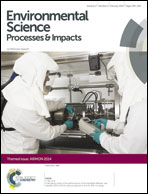Properties of bacterial laccases and their application in bioremediation of industrial wastes
Abstract
The bioremediation process of industrial waste can be made more efficient using ligninolytic laccase enzymes, which are obtained from fungi, bacteria, higher plants, insects, and also in lichen. Laccase are catalyzed in the mono-electronic oxidation of a substrate from the expenditure of molecular oxygen. This enzyme belongs to the multicopper oxidases and participates in the cross linking of monomers, involved in the degradation of wide range industrial pollutants. In recent years, these enzymes have gained application in pulp and paper, textile and food industries. There are numerous reviews on laccases; however, a lot of information is still unknown due to their broad range of functions and applications. In this review, the bacterial laccases are focused for the bioremediation of various industrial pollutants. A brief description on structural molecular and physicochemical properties has been made. Moreover, the mechanism by which the reaction is catalyzed, the physical basis of thermostability and enantioselectivity, which requires more attention from researchers, and applications of laccase in various fields of biotechnology are pointed out.


 Please wait while we load your content...
Please wait while we load your content...